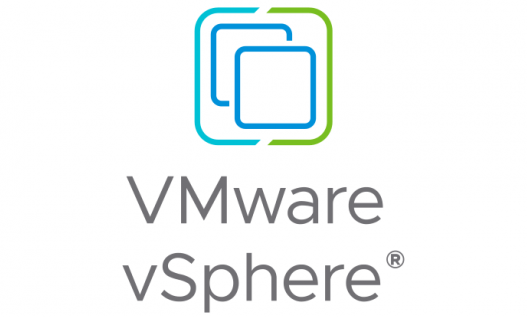Introduction to Multicast Filtering in vSphere 8.0
Multicast networking is a critical component of modern virtualized environments, enabling efficient one-to-many data distribution for applications like video streaming, real-time analytics, and clustered systems. In VMware vSphere 8.0, multicast filtering mode plays a pivotal role in optimizing how multicast traffic is managed across virtual switches. This blog dives into the two primary modes—Basic and IGMP/MLD Snooping—exploring their mechanisms, use cases, and configuration steps to help administrators design high-performance, scalable networks.
Understanding Multicast Filtering Mode in vSphere 8.0
VMware vSphere Distributed Switch (vDS) offers two multicast filtering modes to handle traffic:
1. Basic Multicast Filtering
In Basic mode, the vDS forwards multicast traffic based on the destination MAC address of the multicast group. When a virtual machine (VM) joins a group, its guest OS registers the multicast MAC address with the switch, which maps the address to the VM’s port in a forwarding table. However, this mode has limitations:
- MAC-to-IP Overlap: A single multicast MAC address can map to up to 32 IP multicast groups, causing VMs to receive unintended traffic .
- No Source Filtering: Basic mode does not support IGMPv3 source-specific filtering, potentially exposing VMs to traffic from unapproved sources .
- Scalability Issues: Subscribing to more than 32 multicast MAC addresses leads to oversubscription and packet flooding .
This mode is best suited for smaller environments with minimal multicast groups.
2. IGMP/MLD Snooping
Introduced in vSphere 6.0 and now the default in vSphere 7.0 and 8.0, IGMP/MLD snooping dynamically tracks multicast group memberships by inspecting IGMP (IPv4) and MLD (IPv6) messages from VMs. Key advantages include:
- Precision: Traffic is forwarded only to subscribed VMs using IP addresses, reducing unnecessary data replication .
- Support for Advanced Protocols: IGMPv3 and MLDv2 allow source-specific filtering, enhancing security and efficiency .
- Scalability: Each VM port can handle up to 512 groups and 10 sources, ideal for large-scale deployments .
For environments using Microsoft Network Load Balancing (NLB), note that IGMP snooping may disrupt virtual IP (VIP) accessibility, as NLB does not send IGMP join messages .
Default Settings and Upgrade Considerations in vSphere 8.0
Starting with vSphere 7.0, VMware set IGMP/MLD snooping as the default multicast filtering mode for upgraded or newly created vDS instances . This shift reflects VMware’s emphasis on precision and scalability. Administrators upgrading from vSphere 6.x should verify their multicast configuration post-upgrade, as the change might impact legacy workloads reliant on Basic mode.
How to Configure Multicast Filtering Mode in vSphere 8.0
Step 1: Access vDS Advanced Settings
1. Navigate to the vSphere Client > Networking > Select the target distributed switch.
2. Under Configure > Settings, click Edit and select the Advanced tab .
Step 2: Choose a Filtering Mode
Basic Mode: Select “Basic” to forward traffic based on MAC addresses.
IGMP/MLD Snooping: Select this mode for IP-based filtering. Adjust additional parameters like query intervals (`Net.IGMPQueryInterval`) or source limits (`Net.IGMPV3MaxSrcIPNum`) via host-level advanced settings .
Step 3: Validate and Monitor
After configuration, monitor multicast traffic using:
- Physical Switch Integration: Ensure physical switches support IGMP snooping and have queriers configured to avoid stale entries .
- vMotion and Failover Tests: Verify that multicast subscriptions persist during VM migrations or uplink failures. vSphere proactively injects IGMP queries to update physical switches .
Key Considerations and Best Practices
1. Use Cases for Each Mode
- Basic Mode: Legacy applications, small-scale deployments, or environments where physical switches lack IGMP snooping capabilities.
- IGMP/MLD Snooping: Large-scale multicast applications (e.g., financial ticker plants, media streaming) requiring precise traffic delivery .
2. Compatibility with Microsoft NLB
Disable IGMP snooping if using Microsoft NLB, as its VIPs rely on passive listening rather than explicit IGMP joins .
3. Performance Tuning
- Adjust the Query Interval: Reduce the default 125-second interval for faster group membership updates in dynamic environments .
- Limit Source Addresses: Use `Net.IGMPV3MaxSrcIPNum` to restrict sources per group, enhancing security .
4. Monitoring and Troubleshooting
- Check L2 Multicast Tables: On physical switches, validate that member ports align with VM subscriptions .
- Audit vDS Logs: Look for dropped packets or misconfigured ports during traffic spikes.
Conclusion
The multicast filtering mode in vSphere 8.0 is a powerful tool for balancing efficiency and scalability in virtual networks. While Basic mode suffices for simpler setups, IGMP/MLD snooping unlocks advanced capabilities for modern multicast applications. By understanding configuration workflows, compatibility nuances, and performance tuning options, administrators can optimize their VMware environments to meet evolving business demands.
For further details, explore VMware’s official documentation or dive into multicast routing case studies .
